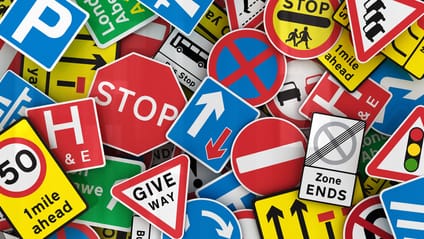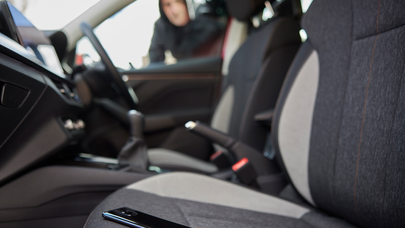
10 things you probably didn’t know about the Highway Code
Time to dust off your Highway Code and refresh your memory


Ah, the Highway Code, that beacon of gentility and decorous road use. No sooner have you passed your test, you’ve retired that helpful little handbook to the back of the shelf to languish for eternity.
According to a recent poll by Seat, over half of UK drivers admitted to not having read it in the last five years, if at all. Oh dear.
The Code changed considerably in January 2022. It created the ‘hierarchy of road users’, where – in the simplest terms – the less vulnerable road user takes automatic liability in the event of a collision.
It also meant, among other things, no more right-of-way for drivers when pedestrians are waiting to cross the road.
Didn’t know that? You’re not alone. The same Seat study showed that almost half of UK drivers don’t know what the ‘hierarchy of road users’ is.
It got us thinking about the other rules that you probably didn’t know.
Advertisement - Page continues belowDon’t flash your headlights to give way to another car

Rule 110 of the Code tells us flashing headlights means 'I am here'. That rule also makes it clear that headlight-flashing does not mean 'get out of my way, you slowcoach' or 'slow down, guys, police or cameras up ahead'. You’re not meant to be using them to convey other messages, or intimidating other drivers. Tsk.
Nor does a quick flash mean 'be my guest and turn'. Rule 111 goes on to instruct drivers not to assume that flashing headlights is an invitation to proceed. Yes, boss.
You MUST NOT use hazard warning lights unless you are on a motorway

The Code's Rule 116 gives guidance on how to use your hazards. It’s against the law to use your hazards while driving, or being towed, unless you’re on a motorway or unrestricted dual carriageway.
You're meant to be broken down, stationary, on a single carriageway, 'to warn that [your car] is temporarily obstructing traffic'. They're not to be used 'as an excuse for dangerous or illegal parking', as per the wording of the Code.
When using them, the Code advises drivers to flash them long enough to ensure your warning has been observed, and then knock 'em off.
Advertisement - Page continues belowDo not allow yourself to become agitated or involved if someone is behaving badly on the road

You'd be forgiven for muttering obscenities under your breath when that numpty at the roundabout cuts you up, but the Code advises you to remain calm. More easily said than done these days, we'd say.
However, if police catch you being rude and/or gesticulating, you could find yourself with three points on your licence and your wallet up to £1,000 lighter in fines.
You won’t get fined for using your phone at Maccy D’s (or any other drive-thrus)

Back in March 2022 when mobile phone laws got stricter, legislators closed a loophole to ensure drivers didn't use their mobile phones to scroll or skip music tracks. Even though the majority of us assumed that was always the rule, the wording of the original legislation wasn't as tight as it now is.
Today, no touching of your mobile phone behind the wheel is permitted, unless it's an emergency. That said, to clarify the confusion, you won't get a fine if you use contactless payment at drive-thru restaurants. Definitely not.
You CAN drive barefoot, in heels, flip flops and wellies

While plenty would argue flat sturdy shoes will give you more control of the pedals than any of the footwear listed, flip flops, heels and wellies aren't explicitly prohibited in the Highway Code.
Instead, Rule 97 of the Code states that "the clothing and footwear you choose to wear whilst driving should not prevent you from using the controls properly". Altering your footwear means you'll have to adjust your driving style each time you get behind the wheel, so it's prudent to keep one pair of driving shoes, then switch out before you step out.
Where you place your dashcam matters

Most drivers know not to put their dash cam in a place that will obscure their vision. Annex 6 of the Highway Code — which also talks about not tinting your front windows — states "windscreens and windows MUST be kept clean and free from obstructions to vision".
What's more, Regulation 30 of the Road Vehicles Regs 1986, defines a red zone, a 290mm wide vertical area from the steering wheel, where all obstruction is totally banned. Stickers, suction-mounted phone holders and dash cams all need to stay out of this zone. Those dangly things hanging off rearview mirrors aren't really allowed, either. Just so you know.
Advertisement - Page continues belowPets must be restrained

That moment of catching a dog lolling its head in the breeze as a car sails by has actually been against the law since 2017. And for good reason.
Not only do we not want our pooches to get bits in their beautiful eyes, Rule 57 of the Code makes clear that any animals travelling in vehicles should not distract the driver.
Failure to keep them properly secured, which could also be really dangerous if the car has to brake suddenly, could result in a fine up to £2,500. Ouch, Fido.
Pedestrians and cyclists always have right-of-way over drivers

As we mentioned in the intro, there's now a 'hierarchy of road users' to protect those most at risk, covered by rules H1, H2 and H3. To avoid a tangle where you could automatically be liable, it's necessary to give way to all pedestrians, cyclists and motorcyclists, if you're in a car.
Before, unless a pedestrian had started to cross, the car got right-of-way when turning or proceeding.
That's not the case anymore. All cyclists, riders and drivers need to hang back if people are waiting at the side of the road. Capiche?
Advertisement - Page continues belowYou can't cruise in the middle lane

Despite the increase in fancy cruise control functionality in modern cars, drivers are still required to move back in after overtaking.
Rule 264 states you must 'keep left unless you are overtaking'. Those hogging the middle lane with their radar-controlled cruising features – overtaking invisible cars or preparing to overtake 35 miles in advance of that caravan – really get our goat. Don't do it.
You MUST NOT park on a road at night facing against the direction of the traffic flow

Although parking any which way is fine during the day, you're meant to park in the same direction as the flow of traffic on a night, as per Rule 248. This is because there's safety reflectors at the rear of the car so oncoming traffic can see your vehicle.
In any event, your headlights and the location’s street lighting might also illuminate that hulking shiny metal mass that is the rebel car parked the wrong way. Wrong or not, stick with the guidance and go with the flow.
Trending this week
- Long Term Review
How can you control the Volvo EX30 through a mobile phone?







